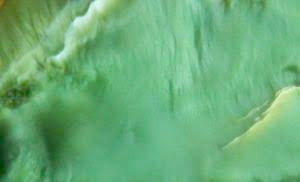
Everything You Need to Know About Pounamu: A Complete Guide
Share
Everything You Need to Know About Pounamu: A Complete Guide
Pounamu, also known as greenstone or New Zealand jade, is one of the country’s most revered treasures. This beautiful and durable stone has held cultural, spiritual, and historical significance for Māori and New Zealanders for centuries. In this complete guide, we’ll explore everything you need to know about Pounamu, from its origins and types to its cultural significance, how to identify it, and how to care for your precious greenstone.
What is Pounamu?
Pounamu is a type of nephrite jade, a naturally occurring stone that is found in the South Island of New Zealand. The word "Pounamu" is used in Māori culture to describe the greenstone, which is valued not only for its beauty but also for its durability and spiritual importance. The stone varies in color, ranging from vibrant green to deeper shades of black, and sometimes features specks of white or gray.
Māori people regard Pounamu as a taonga, a treasure, which is passed down through generations. It is considered a symbol of strength, power, and protection.
The Origins of Pounamu
Pounamu is found predominantly along the West Coast of New Zealand’s South Island, in areas such as the Arahura River. Māori legend tells that the stone was brought to the land by the gods, who gifted it to the Māori people for their use. One popular tale is that of Māui, the demigod, who fished up the North Island and, through his actions, created Pounamu. Other legends associate the origin of Pounamu with the taniwha (water spirits) or celestial beings, each one attributing spiritual and cultural importance to the greenstone.
The stone’s significance is deeply tied to Māori traditions. It was once used to create tools, weapons, and ornaments, such as the well-known hei tiki (carved pendants), mere (short clubs), and toki (adze). Pounamu was not only valued for its strength but was also believed to hold mana, or spiritual power, which could be transferred to its owner.
Types of Pounamu
While all Pounamu shares a similar jade-like appearance, there are variations in colour, texture, and clarity. These differences are influenced by the minerals present in the stone and where it is sourced. The five most common types of Pounamu are:
-
Kahurangi
Kahurangi is a highly prized variety, known for its vivid emerald-green colour and exceptional translucency. It often has few or no imperfections and is traditionally associated with high status. -
Inanga
Inanga ranges from pearly white to grey-green, sometimes with a misty or cloudy appearance. It is named after the native whitebait fish and is often linked with peace and clarity. -
Kawakawa
Kawakawa is one of the most common types. It has a rich, dark green tone and can contain small black spots or streaks. It is often chosen for everyday wear due to its depth of colour and availability. -
Kōkopu
This type features speckled patterns that resemble the skin of the kōkopu, a native freshwater fish. It usually has earthy green tones with brown or gold flecks, making it unique and eye-catching. -
Totoweka
Totoweka is a rare and spiritually significant type of Pounamu that contains reddish or brown streaks. Its name means "blood of the weka," referencing the extinct bird and the stone’s symbolic power.
How to Identify Authentic Pounamu
Given its value, it’s important to be able to identify authentic Pounamu, especially if you are purchasing it as a collector or tourist. Authentic Pounamu has several key characteristics:
-
Color: Genuine Pounamu can vary in color, but it typically has a green hue, ranging from light green to dark green, with some stones showing dark or black areas.
-
Weight: Pounamu is a dense and heavy stone, so it should feel solid and weighty when held.
-
Texture: The surface of authentic Pounamu is smooth but may have some natural inclusions, such as fine lines or small pits.
-
Shine: Pounamu can be polished to a beautiful shine, and it may even appear slightly translucent in certain types like Kahurangi.
When buying Pounamu, make sure to purchase it from reputable sources to ensure authenticity. Many shops and online stores now offer certification or guarantee that the Pounamu is ethically sourced.
The Spiritual Significance of Pounamu
In Māori culture, Pounamu holds a sacred status, as it is believed to have spiritual power (mana). The stone is often passed down through generations as a gift, symbolizing strength, protection, and connection to ancestors. It is often worn as jewelry, such as the popular hei tiki, which is believed to carry the spirit of the person who crafted it.
Wearing or carrying Pounamu is thought to enhance one's strength, bring good fortune, and protect against harm. It is also believed that Pounamu becomes imbued with the wearer’s wairua (spirit), creating a powerful connection between the person and the stone.
How to Care for Your Pounamu
Pounamu is a durable stone, but it requires some care to keep it looking its best. Over time, Pounamu naturally absorbs oils from your skin, which helps to maintain its polish. Here are some tips to ensure your Pounamu remains in top condition:
-
Clean Regularly:
Wipe your Pounamu with a soft cloth to remove dirt or oils. Avoid harsh chemicals or cleaners, as these can damage the surface. -
Polishing:
Pounamu can be polished with a little natural oil (like olive oil or coconut oil). Apply a small amount of oil with your hands, leave it for 5–10 minutes, and then buff off the excess with a soft cloth. -
Avoid Impact:
Though Pounamu is relatively tough, it can still chip or crack if dropped onto hard surfaces. Be cautious when engaging in physical activities or sports, and remove your Pounamu pendant or jewelry to avoid accidental damage. -
Store Carefully:
When not in use, store your Pounamu in a safe place to prevent scratching. A small box or pouch is ideal for keeping it protected.
Where to Find Pounamu in New Zealand
If you’re visiting New Zealand and want to see or collect Pounamu, the West Coast of the South Island is your best bet. The Arahura River, in particular, is a significant source of high-quality greenstone. You can also visit museums and cultural centers to learn about the history of Pounamu and see exceptional examples of carvings and jewelry.
However, it’s important to note that Pounamu is considered a taonga by Māori, and there are strict regulations regarding its collection. It is illegal to collect Pounamu from rivers and beaches without permission. Always ensure that any Pounamu you purchase is ethically sourced and legally obtained.
Conclusion
Pounamu is more than just a beautiful stone—it’s a symbol of strength, spirituality, and connection to the land. Whether you’re interested in its cultural significance, the process of finding it, or simply want to care for your own piece of Pounamu, understanding its rich history and value will deepen your appreciation of this precious taonga.
If you're looking to buy or learn more about Pounamu, make sure to explore reputable sources and learn about the different types, qualities, and meanings behind this sacred greenstone. With this guide, you now have a deeper understanding of Pounamu’s cultural importance and how to care for and cherish your own piece of New Zealand’s heritage.
